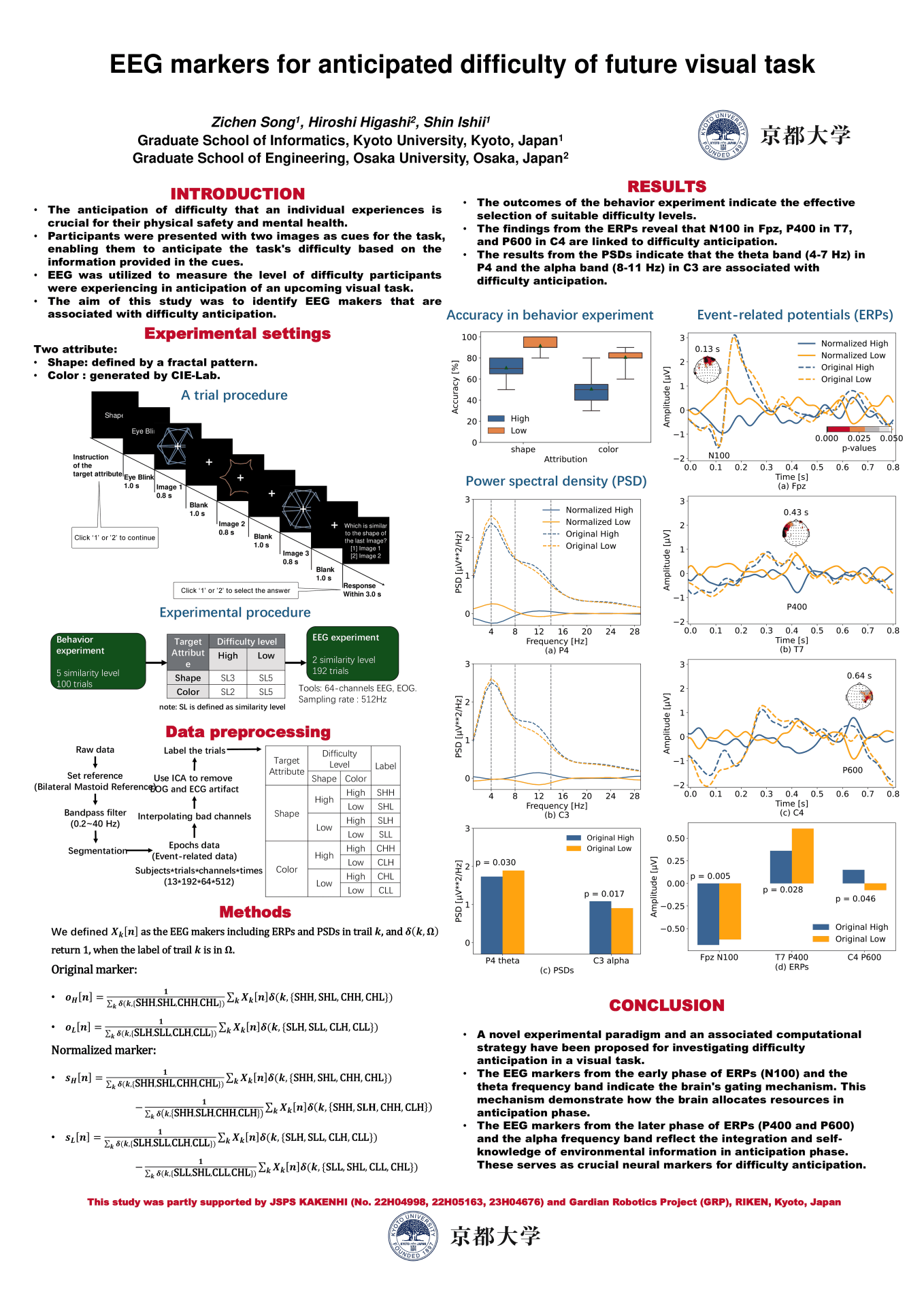Estimating human subjective difficulty in response to anticipated future events is an important technique for maintaining physical safety and mental well-being through effective load management. Towards to developing such techniques, we utilized electroencephalography (EEG) to estimate subjective difficulty associated with a forthcoming visual task. Our experiment entailed presenting participants with two visual stimuli during an initial anticipation period. These stimuli, being partial elements of the subsequent task, allowed participants to voluntarily anticipate the level of difficulty of the upcoming visual task. We found significant correlations between task difficulty and event-related potentials (N100, P400, and P600) as well as frequency bands (theta and beta) in the anticipation period. These results highlight the importance of gating mechanisms and working memory in anticipation period and provide a theoretical foundation for monitoring cognitive load.

脳波ベースのヒューマン・マシン・インターフェース(HMI):EEGデータを用いたシステム開発により、人間のタスク認知や難易度評価を活用した新しいインターフェース技術が可能になる。
心理学・神経科学の研究支援:タスクの難易度予測に関連する脳波指標を研究することで、注意力や集中力に関する理解を深める。
1、労働環境モニタリング:作業者がタスクを遂行する際の心理的準備状態や負荷レベルをリアルタイムでモニタリングし、業務の効率性や安全性を向上させる。
2、運転関連産業:ドライバーが予測される道路状況や運転タスクの難易度に備える心理的準備状態をモニタリング。運転負荷を調整し、安全運転をサポートするシステムの構築。
3、ヘルスケアおよびリハビリテーション:認知機能が低下した患者のタスク難易度認識能力を測定し、適切なリハビリプログラムを提供。
4、ゲームおよびエンターテインメント産業:プレイヤーの予測負荷を分析し、ゲームの難易度やストーリー展開をリアルタイムで調整することで、没入感を高める。
5、人材育成および教育分野:学習者がタスクの難易度を予測する際の脳波データを活用し、個別のトレーニングプログラムを設計。学習内容や課題の難易度をリアルタイムで調整するシステムの開発。
| 氏名 | コース | 研究室 | 役職/学年 |
|---|---|---|---|
| 宋子辰 | システム科学コース | 論理生命学 | 博士2回生 |
https://ict-nw.i.kyoto-u.ac.jp/ict-innovation/19th/wp-content/uploads/sites/14/2024/12/poster.png